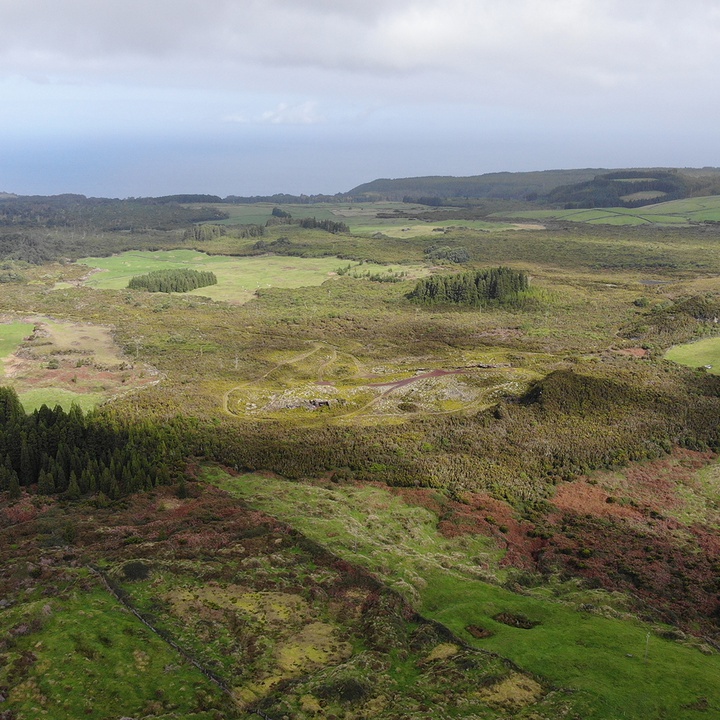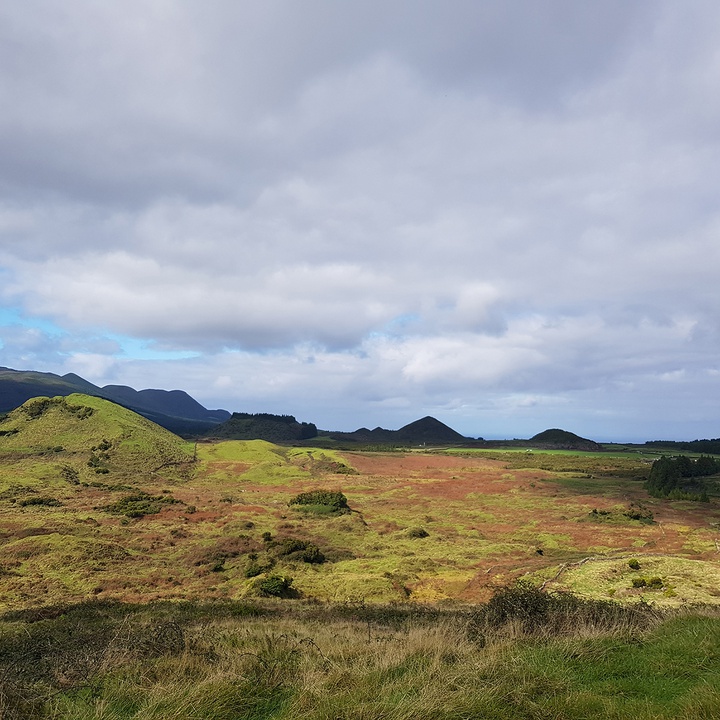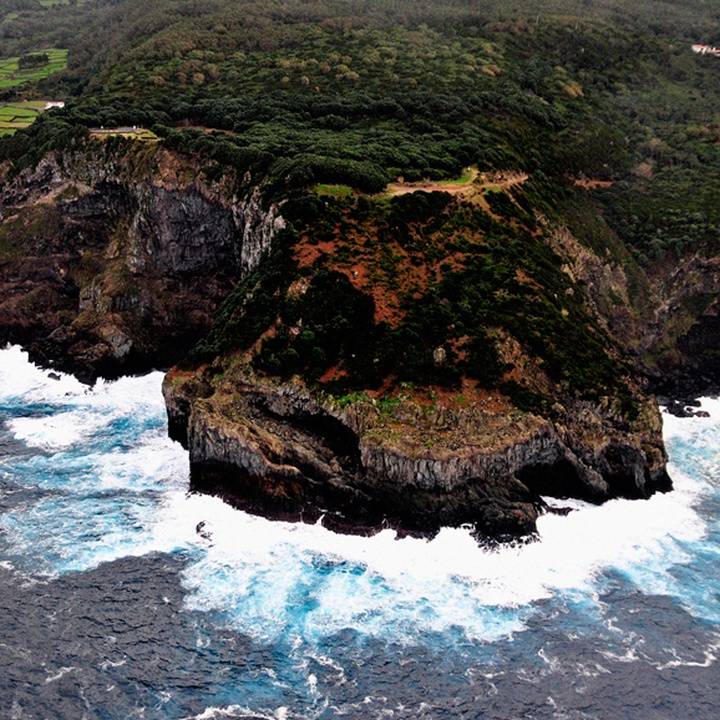Text size:
Planalto Central e Costa Noroeste
Protected Area for the Management of Habitats or Species
Extending from the west coast to the central zone of the island, this area has about 3.933 hectares, coexisting with important buffer zones surrounding other protected areas and several geosites of the Azores UNESCO Global Geopark.
This area presents a major diversity of ecosystems, habitats and species of interest for the conservation of nature, coexisting with a humanized landscape with a strong traditional character.
It develops at the intersection of three geomorphological units of the island: the Santa Bárbara Volcano (on the west zone) and the Pico Alto Volcano (on the north region), which are two central volcanoes with calderas, with volcanic formations of trachytic nature; and the fissural basaltic zone (located between these two volcanoes). The fissural zone is formed by scoria cones and lava flows of basaltic nature s.l.
At Planalto Central, which is a morphologically flattened zone and dotted by scoria cones, it is possible to observe a humanized landscape as a result of the progressive transformation due to the soil use, where the farming zones and fight cattle breeding activities alternate with wetlands covered by ponds and peatbogs of Sphagnum spp. It is frequent to observe waders as the Woodcock (Scolopax rusticola) and the Common Snipe (Gallinago gallinago).
In this area it is also possible to observe the Common Buzzard (Buteo buteo rothschildi), the Azores Wood Pigeon (Columba palumbus azorica), the Azores Blackbird (Turdus merula azorensis), the Azores Grey Wagtail (Motacilla cinerea patriciae) and the only mammal endemic to the Azores, the Azorean Bat (Nyctalus azoreum).
Regarding flora, stand out endemic species such as Azorean Heather (Erica azorica), Azorean Picconia (Picconia azorica), Azorean Laurel (Laurus azorica), Azorean Coastal Fescue (Festuca petraea) and Azorean Coastal Forget-me-not (Myosotis maritima).
It is possible to cross several sectors of this protected area through the Rocha do Chambre (PRC06TER) and Serreta (PRC03TER) walking trails.
This area integrates the Serra de Santa Bárbara e Pico Alto Special Area of Conservation (SAC) within the Natura 2000 network, a Ramsar Site under the Ramsar Convention and an Important Bird and Biodiversity Area (IBA) of the BirdLife International organization.





